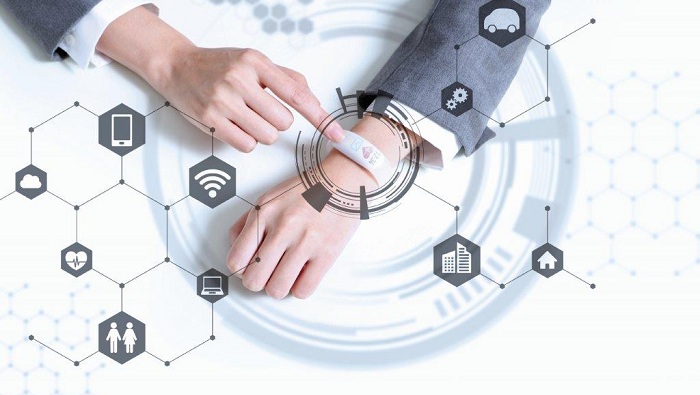In today’s world, the importance of personal security has become paramount, leading many individuals to rely on GPS trackers as tools to enhance safety. Consumers across various demographics have embraced the advantages of GPS trackers for personal security in recent times.
These benefits include enhancing safety levels and providing a sense of peace and security to both users and their loved ones. This article talks about the diverse types of GPS trackers available in the market, how the technology operates, and the essential factors to consider when selecting the suitable GPS tracker for your personal security requirements.
We explore the additional features that can enhance security and present real-life examples and testimonials illustrating how GPS trackers have offered users a sense of peace and security.
Benefits of Using GPS Trackers for Personal Security
The best available benefit of GPS trackers is the enhancement of personal security. People’s safety is guaranteed by the high level of accuracy in tracking personal locations and the prompt emergency response time provided by these devices.
Increased Safety and Peace of Mind
The primary purpose of GPS trackers is to enhance safety and provide users with a sense of peace of mind regarding their safety and well-being. They facilitate location awareness and offer users various options that contribute to a feeling of safety and overall tranquility.
Some key ways GPS trackers achieve this include real-time location tracking, which can be essential in emergencies such as accidents or when someone is lost. Advanced features like geofencing enable users to establish virtual boundaries and receive alerts when a person or object exits the designated area.
This feature has a significant impact on safety and well-being as it provides an additional layer of protection.The introduction of SOS buttons in certain GPS trackers allows users to send immediate distress signals, further enhancing their sense of security.
Types of GPS Trackers
GPS trackers are categorized based on their intended uses for security and safety. Wearable Trackers are utilized to track humans and primarily serve personal safety purposes. Vehicle Trackers aim to enhance vehicle security and are commonly employed for monitoring.
Asset Tracking Devices are specifically designed to prevent theft by tracking valuable goods and are utilized for monitoring purposes. Portable Trackers are versatile and can be employed in various scenarios to monitor a wide range of things.
Wearable vs. Vehicle Trackers
The choice between wearable and vehicle trackers depends on specific use case requirements. Wearable trackers offer on-the-go personal security with a compact design and integration with real-time tracking apps, while vehicle trackers primarily enhance automobile security through advanced tracking technology.
Wearable trackers are ideal for individuals requiring continuous monitoring and easy accessibility. Vehicle trackers boast more advanced GPS and Wi-Fi capabilities, enabling precise location tracking and remote monitoring.┬Ā
Wearable trackers are designed to be small, comfortable, and suitable for daily wear, whereas vehicle trackers are rugged and provide detailed vehicle diagnostics for optimized performance. The real-time tracking apps accompanying wearable trackers can monitor activity levels, health metrics, and sometimes offer emergency alerts.
On the other hand, advanced vehicle tracking systems provide features like geo-fencing, engine diagnostics, and fuel management tools for enhanced fleet management and security.Both wearable and vehicle trackers enhance safety and monitoring capabilities within their respective domains.
The technology of GPS trackers involves a combination of GPS technology, data privacy technology, and advanced tracking accuracy. Benefits of GPS trackers include real-time tracking, accurate location data, and user privacy monitoring.
The GPS technology of GPS trackers ensures accurate location tracking by receiving signals broadcast by satellites. This information is processed by a network of satellites to ensure that your device regularly recalculates your location.
GPS trackers use encrypted communication channels, which help protect the privacy of the user by preventing unauthorized access to sensitive data. These features have made GPS trackers very useful for asset tracking, personal safety, and fleet management applications.
Choosing the Right GPS Tracker
When selecting the best GPS tracker, it is important to consider specific factors to ensure optimal performance. These factors include:
- determining if the GPS tracker is suitable for the type of tracking required
- assessing the availability and user-friendliness of a monitoring app
- checking for critical safety features
- evaluating the effectiveness of emergency services in providing adequate security
Factors to Consider
When evaluating GPS trackers, key features to consider include tracking solutions, GPS accuracy, route tracking, tracking coverage, and availability of emergency contacts. These parameters are essential for ensuring the functionality and reliability of GPS tracking devices.
- Tracking Solutions: Trackers provide various solutions, such as offering tracking data to software or apps or functioning as autonomous tracking devices.
- GPS Accuracy: The accuracy of GPS trackers is crucial for effectively locating a person or asset.
- Route Tracking: The ability to track routes is important for ensuring proper movement and navigation.
- Tracking Coverage: Adequate tracking coverage is essential to prevent loss of movement, especially in remote areas.
- Emergency Contacts: Having emergency contacts readily available on the device allows for immediate support during emergencies.
Additional Features to Look for
GPS trackers offer a range of advanced features beyond standard tracking capabilities to enhance user safety and security. These features include emergency alerts, geofencing, panic buttons, SOS buttons for immediate assistance, and fall detection mechanisms for the elderly.
Emergency Alerts and Geofencing
Emergency alerts and geofencing are two essential safety features in GPS trackers that provide users with valuable tools for ensuring safety and quick responses in critical situations.┬Ā
Geofencing allows the creation of virtual boundaries around the trackers, triggering notifications when devices move inside, outside, or cross these boundaries. This feature can be utilized to alert individuals when a child or loved one strays from a designated safety zone, or to detect unauthorized use of assets like cars and bikes.
Plus geofencing, GPS trackers feature SOS capabilities that enable emergency contacts to be notified through a mobile app when the device is in distress. Particularly beneficial for children, the elderly, and lone workers, this feature allows users to easily reach emergency services with the press of a button.
Some GPS trackers can even be set up to send alerts directly to emergency services.These safety features not only enhance personal security but also provide reassurance by ensuring that help is readily available when needed.
Using GPS Trackers for Peace of Mind
GPS trackers offer various benefits for personal security, such as providing peace of mind through efficient risk management strategies and easy access to emergency services. Safety and security solutions utilizing GPS trackers also include additional tracking tools and advantages.
In emergency scenarios, GPS trackers play a critical role in swiftly locating missing persons. Families, particularly those with young children or elderly relatives, find comfort in being able to track their loved ones in real-time efficiently and securely.┬Ā
In community settings, GPS trackers are commonly used to coordinate search and rescue missions, monitor the movements of at-risk individuals, and enhance emergency response times. Users in these situations appreciate the ability to ensure the safety of their community members more effectively.
Furthermore, GPS trackers are instrumental in emergency preparedness by tracking valuable assets and enabling users to send emergency alerts when needed.┬Ā


















